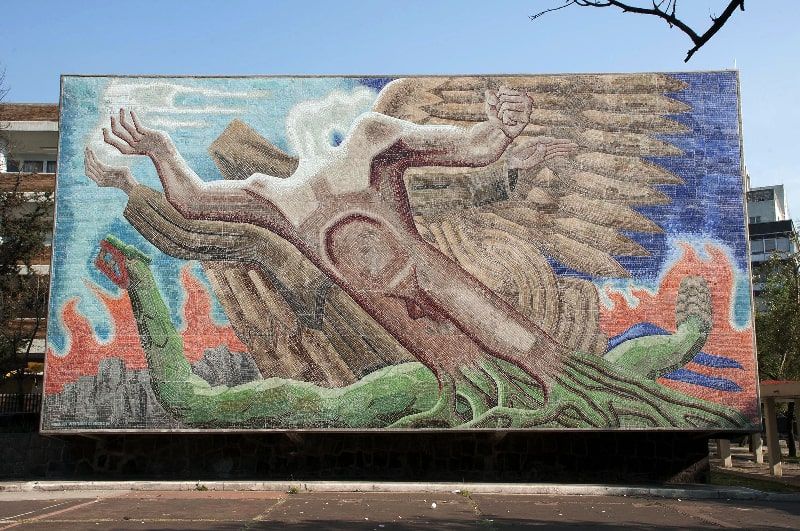Mural "The overcoming of man through culture" by Francisco Eppens Helguera
This work adorns the exterior wall of the José J. Rojo Auditorium at the School of Dentistry in the University City. Its designer, Francisco Eppens Helguera, was a seasoned muralist and experimented with sculpture, oil, and other plastic media.





